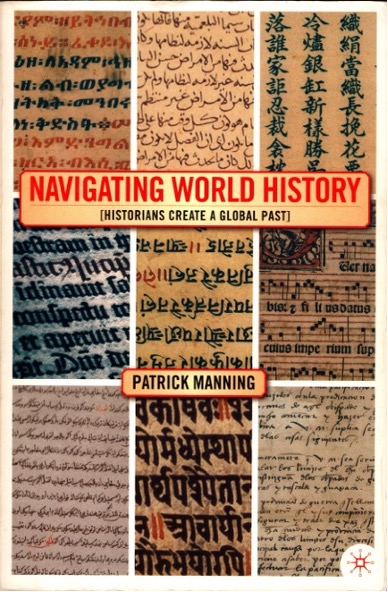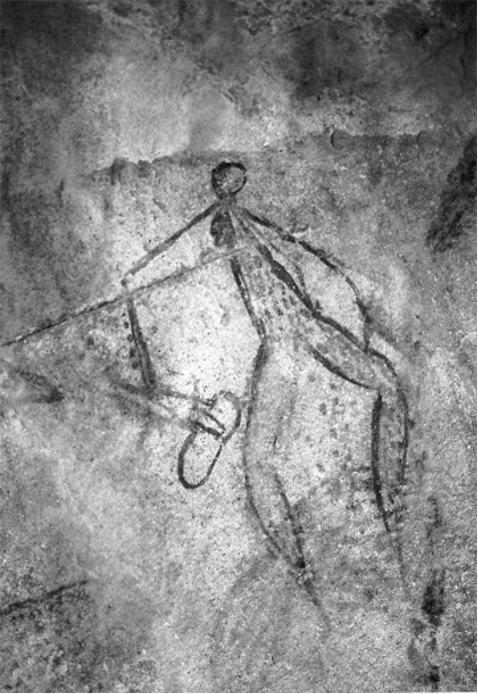How big is world history? What are the pieces of world history? How many subfields does world history have?
In 2003, I published an overview of the growing field of world history. I argued that there is no hope of mastering world history, as the field is too big and endlessly in change. Yet one can hope to navigate world history—that is, move among the topics, evidence, and debates, with the intention of reaching an interpretive destination for selected issues.
I began the book by identifying two patterns in the historical literature: the “internal” path, in which historical knowledge expanded step by step; and the “scientific-cultural” path, in which new knowledge was applied in many disciplines (from genetics to literature) to the historical past. Since the book’s publication, there has been some connection of the internal-historical and scientific-cultural paths—for instance, in showing how disease and climate have affected modern states and human social evolution.

Also in Navigating World History, I divided world history publications by topic or academic discipline: political and economic history; social history; history of ecology, technology, and health; and cultural history. And I focused on methods of research and analysis, programs of graduate study, and interpretive debates. These discussions included different topics but only hinted at subfields in world history. Now, two decades later, I’m interested in taking a try at navigating the interpretive subfields of world history.
Existing Fields of World History
With the advance of research and debate, several subfields within world history have taken form; they have publications, even courses and conferences that focus on them.
Most of them turn out to be extensions of old-style elitist history. In other words, if you consider the “internal” path to world history discussed above, subfields have developed out of the expansion of knowledge in several key areas:
- Global environmental history arose as a subfield especially because of expanding scientific knowledge and public concern about climate change and other environmental degradation. John R. McNeill is the most prominent of the historians in this field.
- Ancient world history is also a well-established subfield. It addresses a period as long as 3000 BCE to 750 CE for much of Africa, Asia, and Europe. Stanley Burstein is a lifelong leader of ancient world history. Trained as an ancient Greek historian, he used Greek-language sources to explain as much world history as possible. His writings address the Mediterranean, Black Sea, Pontic lands, Red Sea, Nile Valley, Mesopotamia, Iran, and Bactria, with connections to India and China. His The World from 1000 BCE to 300 CE (2017) tells much of that story. It’s a concise regional textbook, but it shows how ancient history has grown from its focus on the Acropolis to studies of social history along the Red Sea and in Bactria. It includes health history showing the periodic pandemics that came with moments of early globalization. (Burstein points out that the COVID-19 pandemic came with today’s globalization, extending the same pattern.) He also shows that the ancient world included connection to the many early innovations in Africa, now beautifully described in Christopher Ehret’s Ancient Africa: A Global History to 300 CE (2023).
- World military history goes back to the time of Thucydides. It isolated studies of battles changed with the rise of social history (with attention to rank-and-file, as well as generals) and provides multiple perspectives of world history (with attention to all sides in each conflict). See Jeremy Black’s Rethinking Military History (2004).
- Maritime history follows trade, naval architecture, warfare, and maritime . See Maria Fusaro and Amélia Polónia’s Maritime History as Global History (2010).
- Early modern history grew out of the era of world history. Historians at the University of Minnesota founded the Journal of Early Modern History in 1997 to explore global connections for the period 1300–1800 CE, finding new connections in histories previously thought to be quite separated. A fine example of work in this field is Anne Gerritsen’s study of porcelain manufacture, The City of Blue and White (2020).
- Women in world history examines the histories of queens, heroines, and female writers going far back in time. The era of social history broadened women’s history, and, today, the global women’s movement is encouraging innovations in history. See Women in World History (2019), by Bonnie Smith.
The Gaping Holes in World Historical Knowledge
The subfields listed above are impressive and cover a great deal of historical terrain. But few of them go back further than about 5,000 years. If we put them on a global map, over space and time, we will find large gaps that have been left without attention.
How does one address the gaps? My training as a historian of Africa—the human homeland—keeps taking me back to this question. Population should provide an important set of facts about every time and place, but most estimates before 1600 are wild and inconsistent guesses. Africa, often attributed with very sparse populations, is now far more populous than Europe; the same has been the case from the beginning of humanity and for all of time except in the period 1650–1950, when Europe grew rapidly and Africa was limited by slave trade.
I have been trying to explore issues that stretch across time, with some specificity. Included are language—its origin among energetic youths in East Africa some 70,000 years ago, and its spread through Africa and to all the other languages. The formation of households—once pair-bonding began in early human days, and the persistence of those households as residential groups of about five members. Another is networks—beginning with community networks of some 150 members, followed by the expansion in size of human social organizations from about 20,000 years ago. I also examine social institutions—beginning with language groups and including many other social organizations with specific tasks. These institutions have long existed, but how they work keeps changing.
Cultural history might seem to be hard to understand at a global level, but there are exceptions. Consider the world history of visual representation. It is variegated and complex, yet it should be a subfield of world history, or several linked subfields. Take ancient artwork as an example: The beautiful cave paintings of Europe were preceded by cave paintings in Indonesia created over 40,000 years ago. As with other artwork, those illustrations are a mix of individual genius, collaborative workshops, and audiences who combined to create the work. Figure 2, created in Arnhem Land, Australia, some 20,000 years ago, depicts a woman wielding a hafted stone axe, confirming her use of the tool.

More Questions About World History Subfields
What’s the purpose of setting up and exploring subfields in world history? Is it for research, for conceptualization, or for general reading? Further, what are the periods of human history to be studied? How did one period affect the next? And how far back do we need to go?
And finally, if it is impossible to make a full list of subfields, what are the benefits of trying to list them at all? To start, listing subfields generates new ideas and perspectives, showing connections, causation, and interaction.
In my impression, identifying and studying possible subfields of human history makes one look for big transitions but also for persistent issues in the past. More recently, studies of the history of capitalism have shown that it has been a worldwide phenomenon far more than a British invention. (Jan Lucassen wrote an analysis of work throughout human history, and the irrepressibly imaginative Alfred W. Crosby wrote, Throwing Fire: Projectile Technology through History.) Additionally, literacy has spread slowly since its invention some 5,000 years ago. But in recent years we have reached a point where the great majority of adults are literate—parallel to the spread of speech among all humans. What were the effects of each of these great expansions in communication skills?
These are my preliminary thoughts—just a few of the reasons why exploring the subfields of history is not only valid but valuable. I hope that some readers will add to these ideas, and I hope to return soon with further thoughts.
I’m not seeing the Religion/Belief Systems subfield in your topic areas nor when I use your “Search” tool. Is it an oversight?
As a 40 veteran teacher, I believe (pun intended) that this human motivation must be included.
Thanks to Susan Smith for this response on the importance of Religion and Belief Systems as a topic and a field in world history. I didn’t try to give a full list of fields – this point shows that religion and other really important topics were left out. Two key works in the field are David Lindenfeld, World Christianity and Indigenous Experience (Cambridge UP, 2021) and Charles Weller, ed., Reason, Revelation and Law in Islamic and Western Theory and History (Palgrave, 2021). Pat Manning